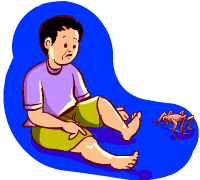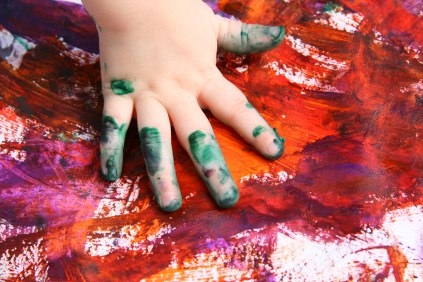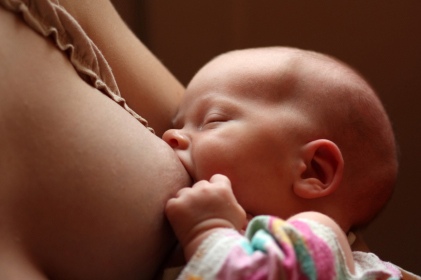Animals like cats and dogs: A bite or scratch which has only broken the skin can be treated at home. Wash the wound with running water, dry it and cover it with a dry adhesive dressing. Check the wound the next day for any redness or inflammation around it, which would suggest infection. In such a case, contact your paediatrician. But if it is a deep bite, whose bottom cannot be seen, clean it under running water and see a doctor immediately. Your child may need an anti-tetanus injection to prevent infection.

Bites and Stings []
Insects: The most usual problem with insect bites is swelling and itching. Cold water or calamine lotion should be useful.
Stings: As in a snake bite, fear and panic are usually the worst aspects of insect stings. First calm the child and tell him that the worst is over. Remove the sting if you can see it and cool the area as best as you can. The sting will always be accompanied by a little swelling. But, if it is really huge, take the child to a doctor. And if the sting is in the mouth, give the child an ice cube to suck on and take him to the doctor.
Occasionally, a child reacts very violently to a sting and becomes pale, sweaty and faint. This is what is called an “anaphylactic shock.” If you notice these symptoms, rush him to a hospital immediately. A child who reacts like this may need further treatment even after the emergency is over, to desensitise him so that he does react in the same way to later stings.
If it is a multiple sting, the child will be in severe pain. Remove his clothes from the affected area and wrap it in a cold, wet sheet before rushing him to the hospital.
Safety tips:
Animals: If you have a dog at home, it is possible that it will be jealous of the baby. Some dogs have been occasionally known to attack babies if they feel thwarted by the baby’s presence. Watch out for danger signals like the dog demanding attention when you are holding the baby. Cats are usually not as emotionally disturbed as dogs are in such cases. But, use a cat net over the pram to make sure that the cat cannot curl up on top of the baby, or scratch the baby if he plays with him.
Don’t leave the dog and the child together, because there is an extent to which dogs put up with mauling children, some get cross and bite.
Dogs and cats could also have skin diseases and parasites that could be dangerous for children. Try to keep your pet clean, regularly dewormed and free from mites and ticks. Don’t forget to let your doctor know about your pet if your child gets any difficult-to-fathom symptoms.
Fish tanks are unhygeinic – fish are liable to various fungus diseases. If you have one, do not allow your child anywhere close to it.
Insects: Bites from mosquitoes, midges are easier to prevent than to treat. Dress your child in long sleeved clothes, long legged clothes and socks if you are in a place that is infested with insects. Always use nets. Apply insect-repellant creams on all exposed skin. But be careful if you are applying it on the face. Stay away from the eyes.










